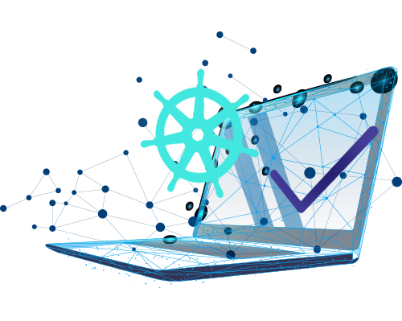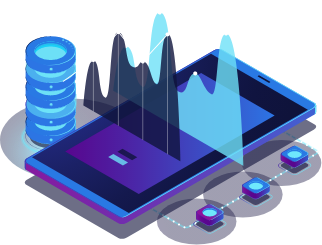Solution overview
Developers rely heavily on open source packages when building their code more like lego than painting from scratch. Dependencies rely on other dependencies and it takes only one vulnerability in an open-source class to cause potential harm to many corporate products built using this class. Open-source security solutions will continuously monitor and detect all the open-source dependencies in the code and alert on any vulnerabilities.
Watch
Watch Full Demo
Keep the Capabilities, Lose the Vulnerabilities: Snyk’s Open Source Security Solution
How Open Source Security Amplifies Business

DevOps-Friendly Integration
DevOps-Friendly Integration
Vulnerability Remediation
Vulnerability Remediation

Kubernetes-Ready
Kubernetes-Ready

Automated Reporting
Automated Reporting
Implementing Open Source Security with GlobalDots
-
Reduced Attack Surface
No more blind spots in application libraries: Get a full, immediate fix to vulnerabilities in the open source dependencies used in your code.
-
IDE Integration
Reduce your development efforts and Shift Left your security issues by detecting affected dependencies while coding, thus stopping bugs before they are ever introduced.
-
Continuous Git Scanning
We help you set up scans for pre-merging pull requests, and set up a daily repository monitoring to detect & address new vulnerabilities.
-
CI/CD Cleansing
Prevent new vulnerabilities from entering the build process by adding an automated test to your CI/CD. Our DevOps team will walk you through every step of the way.
Some Background
Developers are adding security to their stack of hats
The move towards the concept of DevSecOps has accelerated in conjunction with
adoption of cloud native technologies, as security shifts left in the software
development lifecycle. Developers now have a pivotal role in ensuring that cloud
native applications and infrastructure are secure since they increasingly contribute
to the application, the infrastructure code, and workload deployment technologies.
With this in mind, perception of security ownership provided interesting results in
our survey set. While less than 10% of respondents in security roles believed
developers were responsible for the security of their cloud native environment and applications, over 36% of developers stated that they were responsible.
Traditionally, in a more siloed organization, the ownership of security would have
sat firmly with the security team. Respondents in security roles are almost 3x
more likely to attribute security ownership to the IT security team than
respondents in development teams are. These indicators suggest that this
ownership is being accepted by the development teams faster than the security teams are willing to let go of it. Security teams are still adjusting to the shifting responsibilities which transitioning to cloud native brings, and development teams are increasingly aware of their growing role in Cloud Native Application Security.
Tackling Misconfigurations
Cloud native platforms utilizing automated tooling will rely on credentials such as secrets and API tokens in order to operate, and necessitates a more decentralized approach to managing such access. The need for effective management of these kinds of artifacts is a key differentiator from the more centralized pre-cloud era, and a major area of concern for operations teams transforming their infrastructure. Most security leader agree that misconfigurations became a bigger problem since moving to a cloud native platform. Despite secret leaks and data leaks not showing up highly in the actual incidents data, they feature strongly as areas of increased worry, particularly among high adopters of cloud native technologies.
Deployment automation to unlock scalable security controls
While building fully-automated deployment pipelines can be challenging, once automation and processes are in place, they can create a virtuous cycle providing multiple integration points to enable further automation. This is a key enabler for security testing. Companies with high levels of deployment automation tend to adopt security testing at all points throughout the software development lifecycle. While companies of all sizes prefer to test in CI and earlier, enterprises are more likely to also be testing during later deployment and production stages. Despite testing in local development environments, such as an IDE, being a developer-driven task, more automated organizations were nearly twice as likely to see their development teams adopt security early on in their workflows.
Keep Exploring on the GlobalDots Blog
From Our Experts
Practicing Security in Open Source Communities
Open source projects are the embodiment of the core philosophy: ‘free internet and technology for everyone around the globe’. They can be created, changed and distributed to anyone by...
From Our Experts
SolarWinds Orion Security Breach: A Shift In The Software Supply Chain Paradigm
The recent SolarWinds breach highlights a new paradigm in the Software Supply Chain. When compared simply to the...
From Our Experts
Defining Developer-first Container Security
Have you shifted left yet? That’s the big trend, isn’t it? It’s meant to signal a movement of security responsibilities...
From Our Experts
8 best practices to prevent SQL injection attacks
SQL injection is one of the most dangerous vulnerabilities for online applications. It occurs when a user adds...
About GlobalDots
GlobalDots is a 17-year world leader in cloud innovation, connecting businesses with the latest cloud & web technologies.
Fusing an insatiable hunger for innovation with a diligent team of hands-on experts, we help our customers maintain an up-to-date technology position in a quickly-changing world.
We consult, resell, implement, and customize full-stack solutions, including cost & performance optimization, security, connectivity, and managed services, to streamline business processes and provide the foundation for sustainable business growth.
Trusted By


































Talk to an Expert &
Request a Demo
Schedule a call with our experts. Discover new technology to improve your performance, and get web security recommendations.
Innovation challenged customized put to work supported
Innovation Challenged
Our engineers explore & evaluate multiple vendors for each new technology, only introducing to our portfolio what meets their uncompromising standards and thorough examination.
Innovation Customized
We are young cloud industry veterans, intimate with the ins-and-outs of every technology we deal with. We deliver a fully integrated and configured solution, even when custom developments are required.
Innovation Put To Work
With our expertise, rest assured you utilize the full arc of features and capabilities, to optimize your performance and protection in a cost-effective manner.
Innovation Supported
We proactively advise newer, better solutions, to keep one trouble off your plate and allow you focus on your top priority - development and revenue generation.
Follow Us
© 2021 GlobalDots. All rights reserved.
Here you can find our Privacy Policy and GDPR Privacy Notice | Privacy Settings
This site uses third-party website tracking technologies to provide and continually improve our services, and to display advertisements according to users' interests. I agree and may revoke or change my consent at any time with effect for the future.

